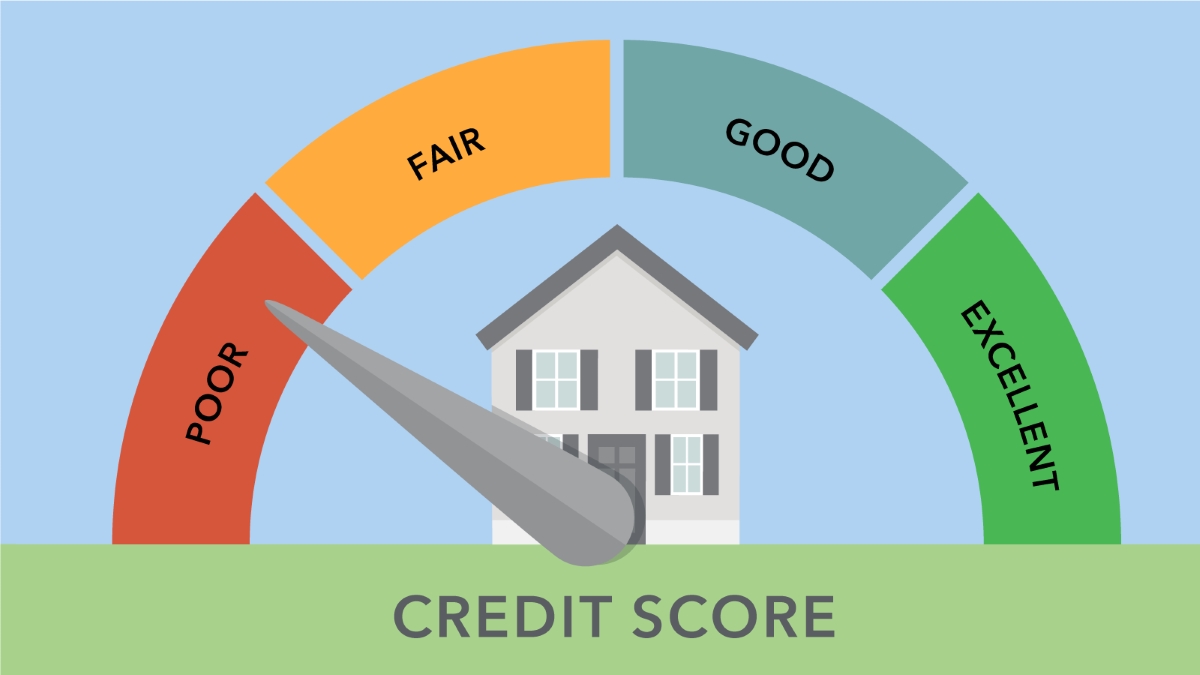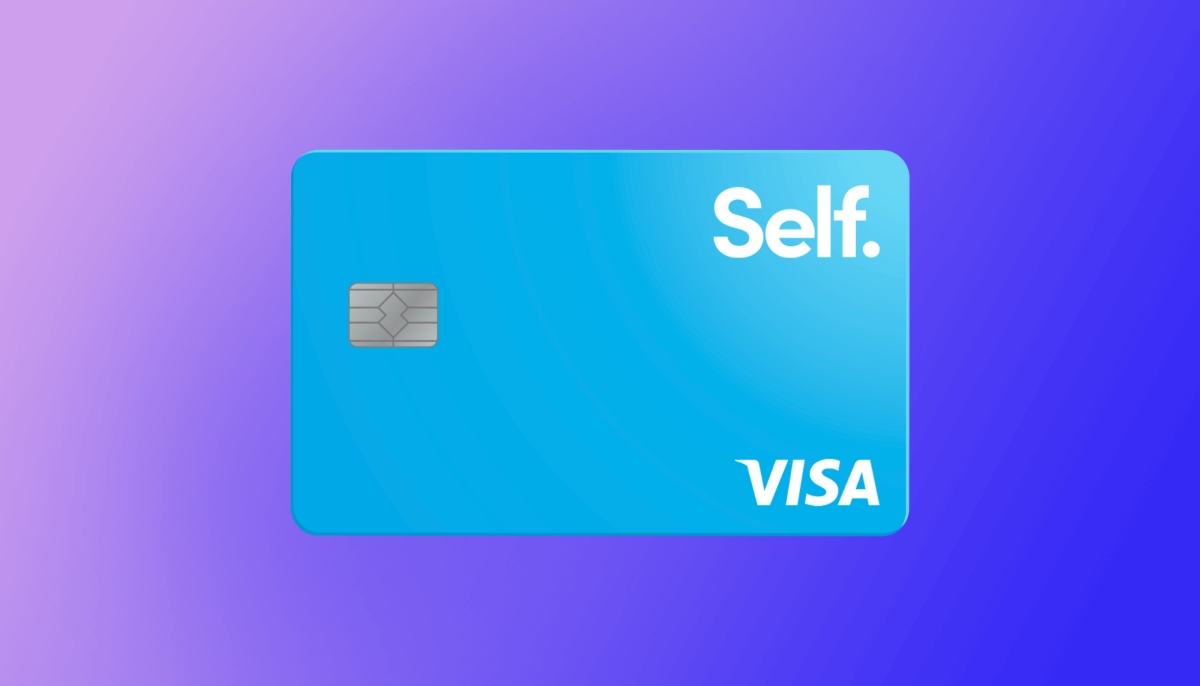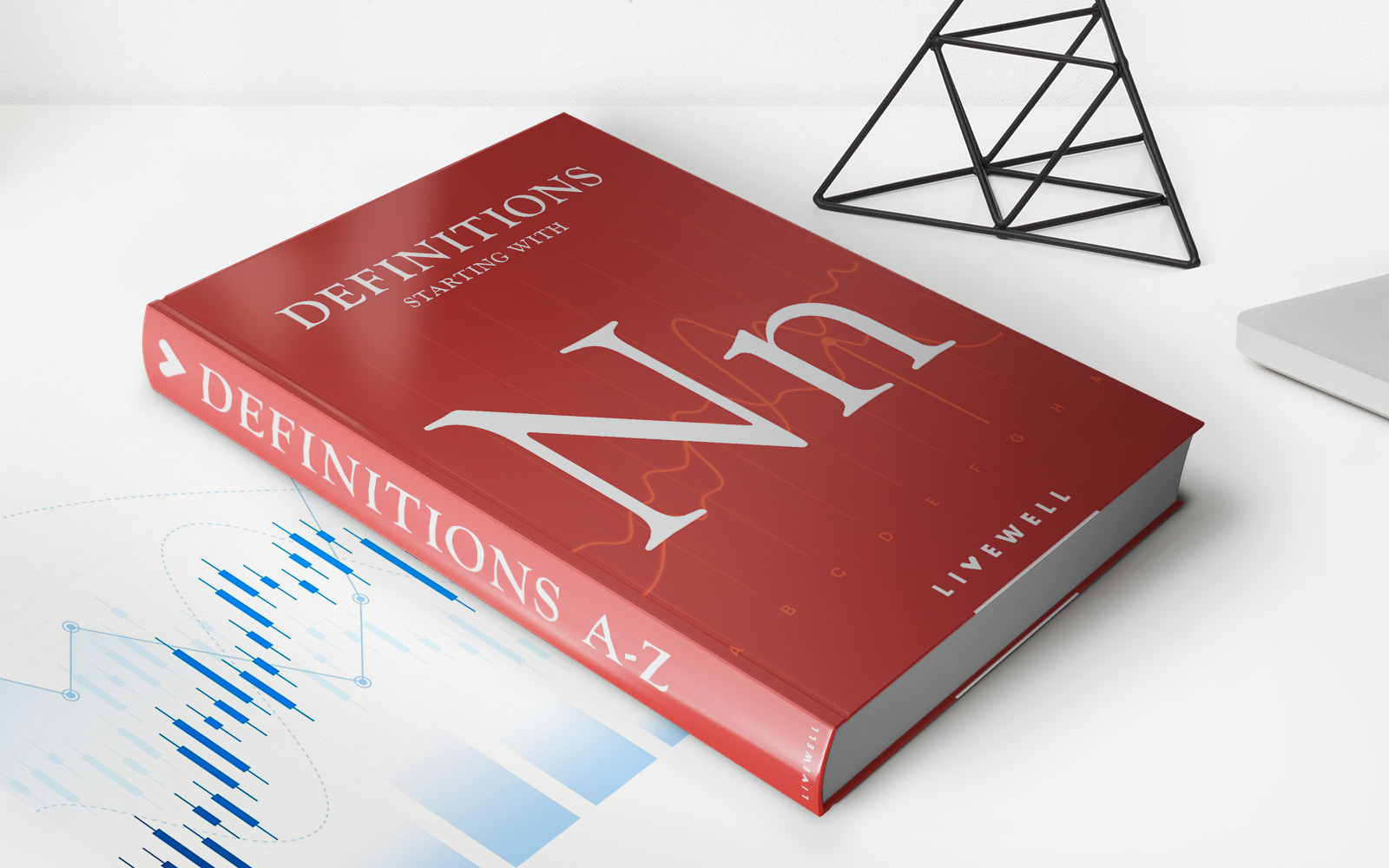

Finance
How Does A Statement Credit Work
Published: January 4, 2024
Discover how statement credits work in the world of finance and how they can benefit you financially.
(Many of the links in this article redirect to a specific reviewed product. Your purchase of these products through affiliate links helps to generate commission for LiveWell, at no extra cost. Learn more)
Table of Contents
Introduction
When it comes to managing your finances, every little bit helps. That’s why understanding the concept of a statement credit can make a big difference in your financial planning. Whether you’re looking to save money on purchases or manage your credit card bills more effectively, statement credits offer a valuable tool for consumers.
A statement credit, simply put, is a credit applied to your account by a lender or credit card issuer. It is a way for these institutions to offer incentives or rewards to their customers. Instead of receiving cash back or points that you can redeem for rewards, a statement credit directly lowers your outstanding balance.
This article will delve into the world of statement credits, explaining how they work, their benefits, limitations, and how you can earn and make the most of them. By understanding this financial tool, you can make informed decisions to maximize your savings and reduce your debt.
So, let’s dive into the world of statement credits and explore how they can benefit your financial well-being.
What is a statement credit?
A statement credit is a financial term that refers to a credit applied to your credit card account or loan account by the issuer or lender. It is a way for these institutions to provide a form of reimbursement, incentive, or reward to their customers.
Unlike cashback rewards or points that can be redeemed for specific items or services, a statement credit directly reduces your outstanding balance. For example, if you have a credit card balance of $500 and earn a statement credit of $50, your new balance will be $450.
Statement credits can be earned through various means, depending on the credit card or lender’s specific rewards program. Common methods of earning statement credits include making a certain amount of purchases within a specified time frame, signing up for specific services, or meeting specific spending requirements.
Statement credits are typically applied directly to your account, reducing the overall amount you owe. It’s important to note that statement credits do not provide you with cash or tangible rewards. Instead, they provide a financial benefit by lowering your outstanding balance and potentially saving you money on interest fees.
Statement credits are a versatile tool that can be used to offset various expenses. Whether you’re looking to reduce your credit card balance, pay off a loan, or offset certain charges on your account, statement credits provide a valuable means of assistance.
Now that we understand what a statement credit is, let’s take a closer look at how it works and the benefits and limitations associated with it.
How does a statement credit work?
Understanding how a statement credit works is essential to fully take advantage of this financial tool. When you earn a statement credit, the amount is applied to your credit card account or loan balance, offsetting the total amount you owe.
Let’s break down the process of how a statement credit works:
- Earning statement credits: Statement credits can be earned through various methods, depending on the credit card or lender’s rewards program. This can include meeting spending thresholds, making specific purchases, or participating in promotional offers.
- Accumulating statement credits: As you earn statement credits, the total amount accumulates in your rewards balance. This balance reflects the value of the statement credits you’ve earned but has not yet been applied to your account.
- Applying statement credits: When you’re ready to redeem your statement credits, you can log in to your credit card account or contact your lender to apply them to your outstanding balance. The statement credits will offset the amount you owe, effectively reducing the balance due.
- Effects on your account: Once the statement credits are applied, your account balance will decrease accordingly. This can have several positive effects, such as lowering your minimum payment, reducing the amount of interest charges you incur, and improving your overall credit utilization ratio.
It’s important to note that statement credits cannot be withdrawn as cash. They are specifically designed to lower your outstanding balance and provide a financial benefit.
Furthermore, statement credits typically have an expiration date. Therefore, it’s essential to review the terms and conditions of your credit card or loan agreement to ensure that you don’t miss out on utilizing your earned statement credits within the specified timeframe.
Now that we’ve explored how statement credits work, let’s delve into the benefits they offer and the limitations you should be aware of.
Benefits of statement credits
Statement credits provide several benefits that can positively impact your financial situation. Let’s explore some of the key advantages:
- Reduced outstanding balance: One of the most significant benefits of statement credits is their ability to lower your outstanding balance. By applying statement credits to your credit card account or loan, you effectively decrease the amount you owe, potentially saving you money on interest charges and helping you pay off your debt faster.
- Flexibility in usage: Statement credits offer a high level of flexibility in terms of how they can be utilized. Unlike rewards programs that may be limited to specific items or services, statement credits can be applied to various charges on your account. Whether it’s offsetting purchases, annual fees, or even reducing the principal balance of a loan, statement credits provide you with the freedom to choose how to utilize the credit.
- Cost-saving opportunities: By reducing your outstanding balance, statement credits can save you money on interest charges. When you have a lower balance, you accrue less interest over time, resulting in potential long-term cost savings.
- Incentives and rewards: Many credit cards and lending institutions offer statement credits as a form of incentive or reward for specific actions. This can range from making a certain amount of purchases within a promotional period to signing up for a new service or hitting spending thresholds. Earning statement credits can be an excellent motivation to make smart financial decisions and maximize the rewards you receive.
- Simple and convenient: Using statement credits is a straightforward and convenient process. With just a few clicks or a phone call, you can apply your earned statement credits to your account balance. This eliminates the need for complicated redemption processes, making it easier for you to enjoy the benefits of your rewards.
Overall, statement credits offer a range of advantages, including debt reduction, flexibility in usage, potential cost savings, incentives, and convenience. By understanding and utilizing these benefits effectively, you can optimize your financial planning and make the most of your credit card or loan rewards program.
Next, we’ll explore some limitations and considerations associated with statement credits.
Limitations of statement credits
While statement credits offer numerous benefits, it’s essential to be aware of their limitations to make informed financial decisions. Here are some key limitations to consider:
- Expiration dates: Statement credits often come with an expiration date. This means that if you don’t redeem them within a specified timeframe, they will be lost. It’s crucial to stay aware of the expiration dates and plan your usage accordingly to ensure you don’t miss out on the benefits you’ve earned.
- Restrictions on usage: Depending on the credit card or lender, there may be restrictions on how you can use statement credits. Some issuers may limit the types of charges you can apply them to, such as excluding cash advances or balance transfers. Reviewing the terms and conditions of your credit card agreement will help you understand any usage restrictions.
- Minimum redemption thresholds: Some rewards programs require you to accumulate a certain amount of statement credits before you can redeem them. This minimum redemption threshold can vary depending on the credit card issuer. So, if you have statement credits that haven’t reached the minimum threshold, you may have to wait until you earn more credits to redeem them.
- Cashback alternatives: While statement credits can be beneficial, it’s essential to consider if they’re the best option for you based on your spending habits and financial goals. Cashback alternatives, such as receiving actual cash back or redeeming points for specific rewards, may provide alternative benefits that better suit your needs. Evaluate the available options and choose the one that aligns with your financial priorities.
- Opportunity costs: When you choose to apply statement credits to your account, you may be sacrificing other potential uses for those credits. For example, if you have the option to use statement credits towards a specific purchase or to receive cash back, carefully weigh the pros and cons to ensure you’re making the most advantageous decision.
By understanding these limitations, you can navigate your rewards program effectively and make informed choices regarding the usage of your statement credits. While statement credits are a valuable financial tool, it’s important to consider any restrictions or trade-offs before redeeming them.
Now that we’ve explored the benefits and limitations of statement credits, let’s move on to discussing how you can earn statement credits.
How to earn statement credits
Earning statement credits can be an excellent way to maximize the benefits of your credit card or loan rewards program. Here are some common methods for earning statement credits:
- Promotional offers: Credit card issuers often run promotional offers where you can earn statement credits by meeting certain criteria. This could involve making a specified number of purchases within a given time period or signing up for a new credit card or service.
- Spending thresholds: Many credit cards offer statement credits as a reward for reaching specific spending thresholds. For example, if you spend a certain amount within a billing cycle or a calendar year, you may earn a statement credit as a bonus.
- Credit card rewards programs: Some credit cards have rewards programs that allow you to earn points, miles, or cashback, which can then be converted into statement credits. These rewards are typically earned based on your spending or specific categories, providing you with the opportunity to accumulate statement credits over time.
- Referral programs: Some credit cards or financial institutions offer referral programs where you earn statement credits for referring friends or family members who successfully apply for a new credit card or loan.
- Specific merchant partnerships: Certain credit cards have partnerships with specific merchants or retailers. By using your credit card for purchases at these partners, you may earn statement credits as a reward or incentive.
To earn statement credits, it’s essential to understand the specific terms and conditions of your credit card or loan rewards program. Take the time to review the program details and any ongoing promotions, as they may provide opportunities to earn statement credits more efficiently.
Additionally, it’s important to manage your credit card or loan accounts responsibly. Paying your bills on time, keeping your credit utilization low, and avoiding excessive debt can help you maintain a positive credit history and maximize your chances of earning statement credits.
By taking advantage of these earning methods and being proactive in managing your accounts, you can accumulate statement credits and enjoy the financial benefits they provide.
Now, let’s delve into some examples to see how statement credits can be utilized in practice.
Examples of statement credit usage
To better understand how statement credits can be used in practice, let’s explore a few examples:
- Offsetting purchases: Let’s say you have a credit card that offers statement credits as part of its rewards program. You earn a $50 statement credit for spending $500 within a promotional period. When reviewing your credit card statement, you notice a $50 charge for a recent shopping spree. By applying the statement credit to your account, the $50 charge is offset, effectively reducing your outstanding balance by $50.
- Annual fee reduction: Many credit cards charge annual fees for the benefits they provide. However, some credit cards offer statement credits that can be applied to offset or reduce these annual fees. For example, if your credit card has an annual fee of $100, and you have a statement credit of $75, you can apply the credit to offset a portion of the fee, ultimately reducing your out-of-pocket expense.
- Loan payment reduction: Statement credits can also be helpful in managing loan payments. Let’s say you have an auto loan with a lender that offers statement credits as part of its rewards program. You earn a $100 statement credit by making on-time payments for six consecutive months. When it’s time to make your monthly payment, you have the option to apply the statement credit to reduce your payment by $100, effectively reducing your loan balance.
- Travel expenses: Some credit cards with travel rewards programs offer statement credits that can be applied to travel-related expenses. For example, if you have a credit card that earns airline-specific statement credits, you can apply them to cover the cost of baggage fees, in-flight purchases, or even future travel bookings.
- Utility or subscription payments: Certain credit cards offer statement credits for specific types of spending, such as utilities or subscriptions. For instance, you may earn statement credits for paying your monthly internet or streaming service bills with your credit card. These credits can help offset these recurring expenses, effectively reducing your overall monthly budget.
These examples illustrate the versatility of statement credits and how they can be applied to various financial situations. By taking advantage of statement credits and applying them strategically, you can effectively lower costs, reduce debt, and make the most of your credit card rewards program.
Now that we’ve explored statement credit usage examples, let’s wrap up our discussion.
Conclusion
Statement credits are a valuable tool that can significantly impact your financial well-being. By understanding how statement credits work, the benefits they offer, and their limitations, you can make informed decisions to optimize your financial planning and maximize your savings.
Statement credits provide a range of benefits, including reducing your outstanding balance, offering flexibility in usage, potential cost savings, incentives, and convenience. They can be earned through various methods, such as promotional offers, spending thresholds, credit card rewards programs, referral programs, and specific merchant partnerships.
However, it’s important to be aware of the limitations of statement credits, such as expiration dates, usage restrictions, minimum redemption thresholds, and potential opportunity costs. By considering these factors, you can make the most advantageous choices when redeeming your statement credits.
Ultimately, statement credits can be utilized in various ways, such as offsetting purchases, reducing annual fees, managing loan payments, covering travel expenses, or offsetting utility or subscription bills. The flexibility of statement credits allows you to make the most of your rewards and optimize your financial situation.
As you navigate the world of statement credits, remember to review the terms and conditions of your credit card or loan agreement, stay aware of any expiration dates, and manage your accounts responsibly. By doing so, you can fully harness the power of statement credits and take control of your financial journey.
So, whether you’re looking to lower your debt, save money on purchases, or make the most of your credit card rewards, understanding and utilizing statement credits can be a game-changer for your financial success.














